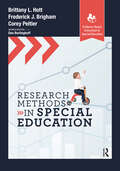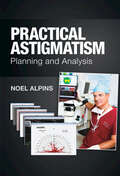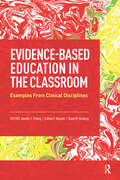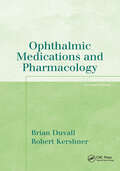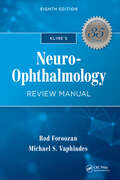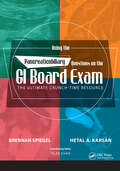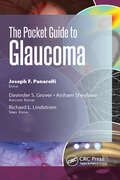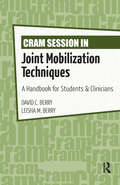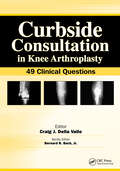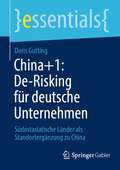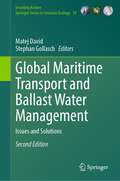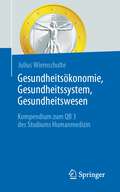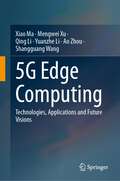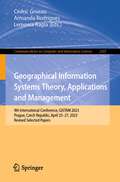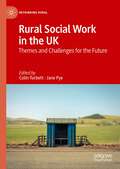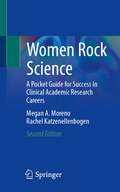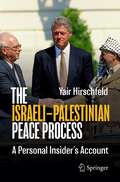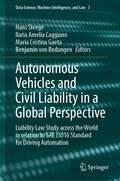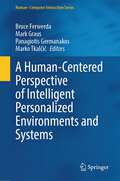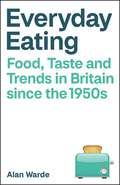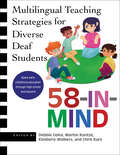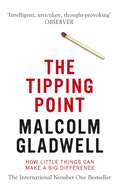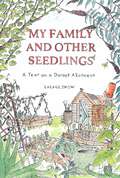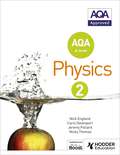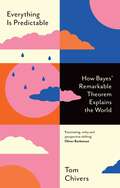- Table View
- List View
Research Methods in Special Education (Evidence-Based Instruction in Special Education)
by Brittany Hott Frederick Brigham Corey PeltierResearch Methods in Special Education equips readers with the knowledge needed to make a difference with data. Authors Drs. Brittany L. Hott, Frederick J. Brigham, and Corey Peltier provide access to cutting edge methodologies and related skills researchers need to successfully carry out projects in applied settings. Dedicated chapters focusing on quantitative research synthesis (e.g., meta-analysis, meta-synthesis), single case design, and program evaluation methods allow readers deeply invested in the field of special education to develop a firm foundation, enabling them to ask and answer their socially significant research questions.Written for students in special education teacher prep programs, early career faculty, school administrators, and curriculum specialists, this text includes numerous features that set it apart from other available resources: Dedicated chapters on ethics, establishing effective research partnerships, and evidence-based practice Cutting-edge program evaluation methods and reporting Comprehensive coverage of methods commonly used in special education Detailed information on securing special education funding Case studies, exemplars, resources, and recommendations for additional reading Included with the text are online supplemental materials for faculty use in the classroom. YouTube videos featuring interviews with authors The up-to-date research practices in this text are a valuable addition for educators and researchers serving students with disabilities who have a responsibility to support in-school and post-school outcomes. Research Methods in Special Education gives educators the tools to facilitate a deeper understanding of the research process and evidence-based practice.
Practical Astigmatism: Planning and Analysis
by Noel AlpinsThe surgical correction of astigmatism is the last frontier to optimizing visual outcomes for patients. Practical Astigmatism: Planning and Analysis is a comprehensive guide to correcting astigmatism from pre-operative planning to post-operative analysis. This provides readers with unique insight to what actually happened surgically: did the astigmatism over or under correct? Was it on-axis or off-axis? With this book, ophthalmologists will be able to analyze previous procedures with the appropriate nomograms and more often achieve targeted outcomes. Dr. Noel Alpins has developed the Alpins Method of astigmatism to provide accurate planning and analysis of astigmatism procedures. His method focuses on analyzing refractive and corneal astigmatism parameters and using the results in future surgery to improve visual outcomes. The importance of the ocular residual astigmatism (ORA) is detailed when planning astigmatism surgery.Practical Astigmatism features vector planning for refractive laser surgery as well as planning and analysis applied to cataract and limbal relaxing incisions, , in addition to demonstrating graphical analysis of astigmatism using high quality vector and fan diagrams, as used in scientific journals. In addition, hemidivisional analysis of the irregular cornea, corneal coupling in incisional and excimer laser surgery for mixed astigmatism and toric IOL planning with total corneal power using corneal topographic astigmatism (CorT total) are addressed as well.Some Questions Answered Inside: What is the difference between regular and irregular astigmatism? How do I diagnose each, and how does this affect my surgical technique? Can I incorporate corneal astigmatism when performing excimer laser surgery? Why are my LRIs undercorrecting the astigmatism? Is it safe to perform excimer laser on keratoconous patients? Which corneal astigmatism measure do I choose and what do I do following a refractive surprise? Practical Astigmatism: Planning and Analysis will help ophthalmologists, optometrists, and technicians alike address each patient’s unique circumstances and act as your in-depth guide to correcting astigmatism.Testimonials… “For more than three decades I have been listening to, arguing with, and admiring the work of Dr. Noel Alpins in the field of astigmatism. Despite his remote location on the small island of Australia, his knowledge of astigmatism is at the peak of Mt. Everest. There are few others who have devoted their careers to understanding and managing astigmatism for which the world of ophthalmology is truly grateful.” - Robert H. Osher, MD “Noel is an original thinker who took on and conquered the complexities of astigmatism analysis, publishing the seminal papers on the way. His work has formed the cornerstone from which our current understanding and management of astigmatism has been built. He is someone from whom we have all learnt a great deal and this book is a testament to this.” - Dan Z Reinstein, MD MA(Cantab) FRCSC DABO FRCOphth FEBO
Evidence-Based Education in the Classroom: Examples From Clinical Disciplines
by Jennifer Friberg Colleen Visconti Sarah GinsbergEvidence-Based Education in the Classroom: Examples From Clinical Disciplines shows educators how to use evidence to inform teaching practices and improve educational outcomes for students in clinically based fields of study.Editors and speech-language pathologists Drs. Jennifer C. Friberg, Colleen F. Visconti, and Sarah M. Ginsberg collaborated with a team of more than 65 expert contributors to share examples of how they have used evidence to inform their course design and delivery. Each chapter is set up as a case study that includes: A description of the teaching/learning context focused on in the chapter A brief review of original data or extant literature being applied A description of how evidence was applied in the teaching/learning context Additional ideas for how evidence could be applied in other teaching/learning contexts across clinical disciplines Additional resources related to the pedagogy described in the case study (e.g., journal articles, books, blogs, websites) Educators in the fields of speech-language pathology, audiology, nursing, social work, sports medicine, medicine, dietetics, dental assisting, physician assisting, radiology technology, psychology, and kinesiology—already familiar with evidence-based practice—will find this resource helpful in implementing evidence-informed approaches to their teaching.While the content in clinical programs is quite different, there are many similarities in how to teach students across such programs. Evidence-Based Education in the Classroom: Examples From Clinical Disciplines highlights these similarities and represents a masterclass in how to practice evidence-based education.
Ophthalmic Medications and Pharmacology (The Basic Bookshelf for Eyecare Professionals)
by Brian Duvall Robert M. KershnerFor those who are new to the subject, ocular pharmacology can be a difficult and sometimes overwhelming topic. Ophthalmic Medications and Pharmacology, Second Edition is a reader-friendly guide that provides a quick review and basic clinical reference of ocular pharmacology.In this updated and revised second edition, Drs. Duvall and Kershner present an overview to the medication and drugs found most commonly in ophthalmic practice without overwhelming those professionals new to the subject. Ophthalmic Medications and Pharmacology concisely reviews commonly used and prescribed medications, how they work, dosage, therapeutic use, and potential side effects. This new edition also highlights key information for patients about the medications they encounter and are prescribed in the clinic.Ophthalmic staff, students, and research professionals looking for an introduction and basic go-to guide will welcome having a copy of Ophthalmic Medications and Pharmacology by their side.New to this edition:· An appendix focused on the drug approval process.· A chapter on retinal therapies.· Study icons to assist in the learning process.· New coverage of vasoconstrictors.
Kline's Neuro-Ophthalmology Review Manual
by Rod Foroozan Michael VaphiadesFor over 35 years, Kline’s Neuro-Ophthalmology Review Manual has presented a unique and user-friendly approach to address clinical neuro-ophthalmology principles used in everyday practice. This Eighth Edition continues that tradition, providing a timely update, while also maintaining the same user-friendly and concise format. Dr. Rod Foroozan and Dr. Michael Vaphiades have taken the mantle of updating this respected manual from Dr. Lanning Kline and continue his tradition of a simple summary of the most important clinical aspects of neuro-ophthalmology with schematic illustrations and material relevant to everyday practice. They are joined by their contributing authors, all seasoned neuro-ophthalmologists, and have organized the book to provide the essential key information on neuro-ophthalmic disorders. The Eighth Edition provides a comprehensive update to the latest information, adds many new effective exercises for case study, and is a complete update on neuro-ophthalmic conditions, including results of recent clinical trials and emerging literature. Also new is the inclusion of a table of neuro-ophthalmic emergencies which serves as a quick guide so that these potentially life-threatening and blinding conditions can be accessed easily.Chapters include: Nystagmus and Related Ocular Oscillations Myasthenia and Ocular Myopathies Nonorganic Visual Disorders Disorders of Higher Visual Function Neuroimaging Kline’s Neuro-Ophthalmology Review Manual, Eighth Edition has all the fundamentals presented logically for all practitioners and residents in ophthalmology, neurology, and neurosurgery. A popular choice among colleagues for more than 35 years, this a must-have resource in neuro-ophthalmology.
Acing the Pancreaticobiliary Questions on the GI Board Exam: The Ultimate Crunch-Time Resource
by Brennan Spiegel Hetal KarsanThe Pancreas. It’s not very large, but it packs a punch. You gotta know about the pancreas. Then toss in the crazy complexities of the biliary system and there’s is a lot to learn to manage your patients. In this latest book in the Acing GI Board Exam Series, the focus is on the pancreas and biliary tree and how they can cause trouble. In today’s fast-paced world, it is a struggle to keep up with the burgeoning panc-bil literature. Until now, there has been no single, slim, but high-yield volume that summarizes the panc-bil you really need to know for the board exam. This review book keeps you on your toes and sharp for everyday clinical practice too. What is the best way to effectively prepare and study, if reading multiple resources can’t seem to fit into your daily schedule? The answer to your study questions (and study time!) can be found inside Acing the Pancreaticobiliary Questions on the GI Board Exam: The Ultimate Crunch-Time Resource. Dr. Brennan MR Spiegel and Dr. Hetal A. Karsan have collected every pearl of wisdom, high-yield factlet, panc-bil "board buzzword," and classic imaging study they could muster, all while keeping Acing thePancreaticobiliary Questions on the GI Board Exam a manageable size. Why You Will Need to Read Acing the Pancreaticobiliary Questions on the GI Board Exam: Carefully vetted board-style clinical vignettes with color images Comprehensive yet succinct answers using a high-yield format Emphasis on key clinical pearls and “board buzzwords” Answers to classic board “threshold values” questions that you need to know but always seem to forget Rapid-fire, crunch-time exam with 150 classic one-liners Acing thePancreaticobiliary Questions on the GI Board Exam fills the unmet need in board review by presenting time-tested and high-yield information in a rational, useful, and contextually appropriate format suitable studying for the board exams and preparing for the recertification exam. Chapters Include: A compilation of general lessons learned from past test-takers “Tough Stuff” board review vignettes Board review “Clinical Threshold Values” “Crunch-Time” Self-Test and Answer Guide—time to get your game on! With its focus on pearl after pearl, emphasis on images, and attention to high-yield “tough stuff” vignettes you don’t know the answers to (yet), Acing the Pancreaticobiliary Questions on the GI Board Exam is truly the ultimate crunch-time resource for acing the GI board examination, taking recertifying examinations, looking good on clerkship rounds, or for just challenging yourself with interesting and entertaining vignettes.
The Pocket Guide to Glaucoma (Pocket Guides)
by Joseph Panarelli Davinder Grover Arsham SheybaniThe Pocket Guide to Glaucoma provides essential information on glaucoma for medical students, residents, fellows, and general ophthalmologists.Drs. Joseph F. Panarelli, Davinder Grover, Arsham Sheybani, and colleagues have designed this book as the ultimate quick-read manual on glaucoma, using a conversational tone that allows readers to retain information in the most effective manner. Medical students, residents, and fellows can use this accessible, high-yield handbook during their rotations to familiarize themselves with the essentials on glaucoma, while general ophthalmologists will be glad to have it as a quick reference guide to current best practices.Each chapter in The Pocket Guide to Glaucoma is arranged in short, easy-to-read sections and is accompanied by numerous color photographs to aid in recognition and retention.Among the topics covered: Optic nerve head imaging Laser procedures for glaucoma Medical therapy for glaucoma Microinvasive glaucoma surgery Traditional glaucoma surgery: pearls and pitfalls Landmark glaucoma trials Eye care providers at all skill levels will benefit from the high-yield, quick-access information contained in The Pocket Guide to Glaucoma, whether they are preparing for their first surgeries or are longtime physicians.
Cram Session in Joint Mobilization Techniques: A Handbook for Students & Clinicians
by David Berry Leisha BerryWhen all you need is a basic understanding of joint mobilization techniques, supplemented by succinct and demonstrative examples, look to Cram Session in Joint Mobilization Techniques: A Handbook for Students & Clinicians for quick, at-your-fingertips facts.Cram Session in Joint Mobilization Techniques by Dr. David C. Berry and Leisha M. Berry is a descriptive quick reference that provides the rehabilitation professional with a detailed yet easy-to-digest approach to joint mobilization techniques. Organized into quick-reference tables and concise descriptions of each technique, this resource offers an efficient way to learn the cognitive and psychomotor skills necessary to competently perform joint mobilization techniques.What is in your Cram Session: Easy-reference tables of joint complex osteology and arthrology Photographs depicting mobilization techniques for each joint Case studies in mobilization Quiz questions to test your knowledge Cram Session in Joint Mobilization Techniques: A Handbook for Students & Clinicians is an informative, well-organized handbook for all students and clinicians in athletic training, physical therapy, occupational therapy, osteopathic medicine, and other rehabilitation professions.
Curbside Consultation in Knee Arthroplasty: 49 Clinical Questions (Curbside Consultation in Orthopedics)
by Craig J. Della ValleAre you looking for concise, practical answers to those questions that are often left unanswered by traditional knee arthroplasty references? Are you seeking brief, evidence-based advice for complicated cases or controversial decisions? Curbside Consultation in Knee Arthroplasty: 49 Clinical Questions provides quick answers to the thorny questions most commonly posed during a “curbside consultation” between orthopedic surgical colleagues.Dr. Craig J. Della Valle has designed this unique reference which offers expert advice, preferences, and opinions on tough clinical questions commonly associated with knee arthroplasty. The unique Q&A format provides quick access to current information related to knee arthroplasty with the simplicity of a conversation between two colleagues. Numerous images, diagrams, and references are included to enhance the text and to illustrate the management of the knee.Curbside Consultation in Knee Arthroplasty: 49 Clinical Questions provides information basic enough for residents while also incorporating expert advice that even high-volume clinicians will appreciate. Practicing orthopedists, orthopedic residents, and non-physician personnel will benefit from the user-friendly and casual format and the expert advice contained within.Some of the questions that are answered: I have a patient who has a deformity of the distal femur and arthritis of the knee. Should I do an osteotomy to correct the deformity? If I am doing a total knee arthroplasty and the patella does not seem to track well, what should I do? I am doing a total knee in a patient with a varus deformity. I have done my standard release and the knee is still tight medially. What should I do? What do I do if I cut the MCL intra-operatively? How do you assess joint line position at the time of revision TKA? What are the clinical consequences if it is elevated?
China+1: Südostasiatische Länder als Standortergänzung zu China (essentials)
by Doris GuttingDieses essential gibt einen aktuellen Überblick über die Hintergründe der im Juli 2023 erstmals veröffentlichten China-Strategie der Bundesregierung und über die südostasiatischen Länder, die als Standortergänzung für eine „China+1“-Strategie in Frage kommen. Spätestens seit 2020 wird die starke Abhängigkeit der deutschen Wirtschaft zunehmend zum Problem. Es empfiehlt sich kein „Decoupling“, sondern ein „De-Risking“: der Auf- und Ausbau von Beziehungen zu weiteren Ländern in der Region, um zu diversifizieren und damit Risiken zu mindern. Dieses Buch will aufzeigen und erklären: Was sind die Gründe der neuen China-Strategie und welche Länder kommen als Standortergänzungen in Frage?Ein Buch für alle, die in China unternehmerisch tätig sind und über strategische Standortergänzungen und -alternativen nachdenken.
Global Maritime Transport and Ballast Water Management: Issues and Solutions (Invading Nature - Springer Series in Invasion Ecology #16)
by Matej David Stephan GollaschIn 2015 the first edition of this book was published before the Ballast Water Management (BWM) Convention entered into force. To our knowledge this was and still is the first comprehensive book on BWM worldwide. It provided an overview of possible solutions to the complex issue of BWM. It further outlined consequences and implications to address the ballast water "problem" in line with provisions of the BWM Convention considering environmental, shipping, legal and policy perspectives. The previously addressed subjects remain essential, but new subjects appeared which more recently have proven to be critical for the effective BWM Convention implementation. After the first book content was already agreed and in preparation, new advances were achieved in BWM-related research around the world. Further, new experience was gained and issues came out during the preparation processes of countries for the BWM Convention implementation. The editors of the first book remained heavily involved in BWM-related research and other processes, hence these new critical BWM issues and subjects are now dealt with in the second edition of this book to complement the first one. In essence, this new book covers main issues that arose recently during the implementation of the BWM Convention. Scientists and experts with extensive experience in these subjects from around the globe from academic and private sectors, as well as national administrations, were involved in the preparation of this book.
Gesundheitsökonomie, Gesundheitssystem, Gesundheitswesen: Kompendium zum QB 3 des Studiums Humanmedizin
by Julius WiemschulteIm Humanmedizinstudium ist der Querschnittsbereich 3 "Gesundheitsökonomie, Gesundheitssystem und Öffentliches Gesundheitswesen" ein verpflichtender Kurs im klinischen Studienabschnitt, der an allen medizinischen Fakultäten in Deutschland angeboten wird. In diesem Kurs erlernen die Studentinnen und Studenten die Systematik des Gesundheitswesens. Dieses Buch bietet in prägnanter Form die wichtigsten Informationen zum erfolgreichen Absolvieren des QB 3 und deckt die Themenfelder Gesundheitssystem, Öffentliches Gesundheitswesen, Gesundheitsökonomie und Qualitätsmanagement ab. Die klar strukturierten Inhalte werden durch praktische Bezüge zum ärztlichen Arbeitsalltag greifbar, so dass die große Relevanz des Stoffes als Rückgrat der ärztlichen Tätigkeit ersichtlich wird. Verständnisfragen zur Wissensreflektion und Fallbeispiele runden das Kompendium ab. Das Buch richtet sich an Studentinnen und Studenten der Humanmedizin und ist auch empfehlenswert für fachnahe Berufsgruppen (Sozialversicherungsfachangestellte, Gesundheits- und Pflegefachberufe).
5G Edge Computing: Technologies, Applications and Future Visions
by Qing Li Shangguang Wang Ao Zhou Xiao Ma Mengwei Xu Yuanzhe LiEdge computing has been identified as one of the key technologies for 5G networks and beyond due to two prominent advantages: low network latency and reduced core network load. By empowering cloud capabilities and IT service environments at the network edge, edge computing can well support applications of 5G and beyond, such as augmented/virtual reality (AR/VR), vehicular network (ultra-reliable low-latency communication services),Internet of Things (massive machine type communication services), and mobile high-definition video (enhanced mobile broadband services). Therefore, edge computing has attracted the attention of both industry and academia since its emergence. This book highlights the progress of 5G edge computing in both industry and academia according to our long-term efforts, including the current practice of public edge providers, the research process of edge computing from academia, the integration of edge computing with 5G, and the future visions of edge computing in the 6G era. From this book, the readers can benefit from: (1) the first comprehensive measurement study on a leading public edge platform, NEP (next-generation edge platform); 2) a clear and in-depth introduction of the key technologies of 5G edge computing; (3) the latest progress of 5G-integrated edge computing; and (4) pioneering exploration of 6G edge computing based on Tiansuan constellation – an open satellite-terrestrial integrated platform. Both the researchers from academia or practitioners from industry can benefit significantly from this book.
Geographical Information Systems Theory, Applications and Management: 9th International Conference, GISTAM 2023, Prague, Czech Republic, April 25–27, 2023, Revised Selected Papers (Communications in Computer and Information Science #2107)
by Cédric Grueau Armanda Rodrigues Lemonia RagiaThis book constitutes the refereed post-proceedings of the 9th International Conference on Geographical Information Systems Theory, Applications and Management, GISTAM 2023, held in Prague, Czech Republic during April 25–27, 2023. The 6 full papers included in this book were carefully reviewed and selected from 37 submissions. They focus on challenges in geo-spatial data sensing, observation, representation, processing, visualization, sharing and managing, in all aspects concerning both information communication and technologies (ICT) as well as management information systems and knowledge-based systems.
Rural Social Work in the UK: Themes and Challenges for the Future (Rethinking Rural)
by Colin Turbett Jane PyeThis book draws together writers from various backgrounds to discuss issues that affect those working in rural social work settings, on themes ranging from current issues that are common to rural localities (including those arising from the Covid-19 pandemic) to future challenges. Common themes that run through all the chapters and hold them together include community and place, stigma and alienation, inequality and social justice, and the environment. Several of the chapters include a strong user voice and challenge cis-heteronormative and other stereotypes of rural life by celebrating diversity in these communities. The book will therefore be invaluable to rural practitioners, students studying to work in rural settings and their educators, as well as rural sociologists and policy makers.
Women Rock Science: A Pocket Guide for Success in Clinical Academic Research Careers
by Megan A. Moreno Rachel KatzenellenbogenThe second edition of this book builds on the success of the first edition, which had many unique features including an emphasis on success in context and how women can thrive in today's clinical research environment. In this new edition, Women Rock Science incorporates promoting inclusivity of gender diverse persons, working in the hybrid world since the COVID-19 pandemic, and the value of diversity, equity and inclusion (DEI), with lessons learned from other women scientists, throughout the book. This book provides key strategies and skills around a central conceptual model as well as a sense of community with other women scientists. Clinical academic research is conducted in many forms, and Women Rock Science speaks to lab-based work, clinical work, health services/implementation science, quality improvement, medical education, health equity, and DEI-focused research throughout its chapters. The approaches and insights addressed are not narrowlyfocused on a discipline or a methodology of research. Rather, Women Rock Science addresses how to achieve excellence in research, across disciplines, within an academic institution. Described as the "unwritten rules" of successfully navigating a clinical academic research career, Women Rock Science is a valuable resource that can be used in a variety of settings. It is beneficial for University classes, lab group meetings, and can be shared with one’s community of mentors, mentees and colleagues.
The Israeli–Palestinian Peace Process: A Personal Insider's Account
by Yair HirschfeldThis book describes the evolution of the Israeli-Palestinian peace-seeking process from 1967 to the present. Written from the perspective of Israel’s most prominent peace activist, it offers an unparalleled insider’s account of a crucial set of negotiations intended to settle a seemingly endless conflict. Hirschfeld’s historical narrative provides a wealth of knowledge and experience that is indispensable to anyone seeking to seriously approach the Middle East conflict. The book’s thorough analysis of the successes and failures of all peace efforts since the Six-Day War represents an essential asset for future negotiators, politicians, diplomats and peace activists alike. Moreover, the book shares pearls of human wisdom that anyone searching to resolve conflicts in general should take to heart. The book is of burning topicality. Not only with a view to the normalisation process between Israel and Arab countries that began with the recent Abraham Accords (2020) but also regarding the new “age of war” in Europe, sparked by Russia’s war of aggression against Ukraine.
Autonomous Vehicles and Civil Liability in a Global Perspective: Liability Law Study across the World in relation to SAE J3016 Standard for Driving Automation (Data Science, Machine Intelligence, and Law #3)
by Hans Steege Ilaria Amelia Caggiano Maria Cristina Gaeta Benjamin Von BodungenIn the automotive sector, digitalisation, connectivity and automation are rapidly expanding. In tomorrow’s vehicles, human beings will merely be passengers – which raises a host of complex legal issues regarding accidents involving self-driving vehicles. This book is the first to offer a comprehensive, global overview of civil liability regimes for all levels of vehicle automation in jurisdictions that represent some of the most important markets for the automotive industry. After a technical introduction to how self-driving cars work, the individual chapters analyse the liability for driving automation at SAE J3016 levels 0 through 5 from a country-specific perspective. All chapters were written by experts in the field and follow a uniform legal structure. Hence, the book offers an essential comparative analysis of similarities and differences in the jurisdictions examined, while also providing suggestions for future legislative changes at the national and international level. The book is not only relevant for legal scholars and practitioners but will also be of particular interest to anyone involved in the design, manufacture, distribution and operation of self-driving vehicles.
A Human-Centered Perspective of Intelligent Personalized Environments and Systems (Human–Computer Interaction Series)
by Marko Tkalčič Panagiotis Germanakos Bruce Ferwerda Mark GrausThis book investigates the potential of combining the more quantitative - data-driven techniques with the more qualitative - theory-driven approaches towards the design of user-centred intelligent systems. It seeks to explore the potential of incorporating factors grounded in psychological theory into adaptive/intelligent routines, mechanisms, technologies and innovations. It highlights models, methods and tools that are emerging from their convergence along with challenges and lessons learned. Special emphasis is placed on promoting original insights and paradigms with respect to latest technologies, current research trends, and innovation directions, e.g., incorporating variables derived from psychological theory and individual differences in adaptive intelligent systems so as to increase explainability, fairness, and transparency, and decrease bias during interactions while the control remains with the user.
Everyday Eating: Food, Taste and Trends in Britain since the 1950s
by Alan WardeHow have eating habits changed in recent decades? What does it mean to eat well? This fascinating book examines continuity and change in food consumption and eating patterns since the 1950s. The culinary landscape of Britain is explored through discussion of commodification, globalisation and diversification enabling an understanding of both developing trends and enduring habits. The author’s research undertaken over 40 years offers fresh insights into such practices as everyday meals, shopping, cooking and dining out and how these are shaped by demographic, social and cultural processes. The book provides a comprehensive and engaging analysis of eating in Britain today and of the many controversies about how this has changed.
58-IN-MIND: Multilingual Teaching Strategies for Diverse Deaf Students
by Debbie Golos; Marlon Kuntze; Kimberly Wolbers; Chris KurzA highly practical and engaging resource for current and future teachers, 58-IN-MIND describes and demonstrates theoretically-driven, research-based, and classroom-tested best practices for using American Sign Language and English in instruction across the curriculum. The multilingual and multimodal instructional strategies presented here are embedded in approaches that aid learning and foster well-being. This book will support teachers in creating meaningful educational experiences for Deaf students in all grades, from early childhood education through high school. Each chapter is written by a team of researchers and P–12 teachers with at least one Deaf coauthor. With seventy-five percent of the authors being Deaf, this is the first teaching methods book to harness the expertise of Deaf professionals at this level, highlighting their vital role in Deaf education and in shaping inclusive and effective learning environments. This book meets the need for a resource that recognizes the diversity of Deaf students by creating space in the classroom to honor their home/heritage languages, cultures, races, genders, abilities, hearing levels, and other multiple and intersecting identities. Written in a conversational tone, the book includes core recommendations for instruction of the targeted subject area, examples of key strategies, lessons and real stories from those working in the field, suggestions for practice, and recommended resources. “58-IN-MIND” in the title refers to the version of the ASL sign "stick" that is made on the forehead, which is equivalent to the English idiom “to stick in one's mind.” As in, when students learn in a culturally responsive manner, the learning is likely to stick. The title also alludes indirectly to the collective aspirations of the chapter authors that the practices discussed in the book will also stick in the readers’ minds, and thus have a transformative impact on the way Deaf students are taught.
The Tipping Point: How Little Things Can Make a Big Difference
by Malcolm Gladwell'A wonderful page-turner about a fascinating idea that should affect the way every thinking person thinks about the world around him' Michael LewisIn this brilliant and original book, Malcolm Gladwell explains and analyses the 'tipping point', that magic moment when ideas, trends and social behaviour cross a threshold, tip and spread like wildfire. Taking a look behind the surface of many familiar occurrences in our everyday world, Gladwell explains the fascinating social dynamics that cause rapid change.'Hip and hopeful, THE TIPPING POINT is like the idea it describes: concise, elegant but packed with social power. A book for anyone who cares about how society works and how we can make it better' George Stephanopoulos
My Family and Other Seedlings: A Year on a Dorset Allotment
by Lalage SnowA few years ago Lally Snow moved to a Dorset village with her husband and three small children, having spent over a decade as a war photographer, foreign correspondent and film maker living in Kabul. She covered the conflict there as well as other wars from Gaza to Eastern Ukraine, and Iraq.In the late winter of 2021-22, Lally decided to rent an allotment, despite having only a rudimentary knowledge of gardening. She was starting from scratch and setting herself the dual challenge of growing an allotment at the same time as growing a family.This is a heart-warming, wry and at times tearful account of Lally's travails as a mother and novice allotment holder, counterpointing horticultural progress with the perils of parenting. Along the way she reflects on the drudgery of English rural domesticity after a professional life chasing war and adventure, the history of the allotment since Saxon times, and the wonderful moment when gardening becomes fun rather than just feeding a family.
AQA A Level Physics Student Book 2
by Nick England Jeremy Pollard Nicky Thomas Carol DavenportExam Board: AQALevel: AS/A-levelSubject: PhysicsFirst Teaching: September 2015First Exam: June 2017AQA ApprovedExpand and challenge your students' knowledge and understanding of Physics with textbooks that build mathematical skills, provide practical assessment guidance and support for all 5 topic options.- Provide support for all 5 topic options: Astrophysics is covered in the book, with Turning Points in Physics, Engineering Physics, Medical Physics and Electronics available to download online.- Offers guidance for the mathematical requirements of the course with worked examples of calculations and a dedicated 'Maths in Physics' chapter- Measures progress and assess learning throughout the course with Test Yourself and Stretch and Challenge Questions to extend the most able pupils beyond A-level- Supports all 12 required practicals with applications, worked examples and activities included in each chapter- Develops understanding and enable self- and peer-assessment with free online access to 'Test yourself' answers.DOWNLOADABLE OPTION TOPIC CHAPTERS To request your downloadable copies please email science@hodder.co.uk.
Everything Is Predictable: How Bayes' Remarkable Theorem Explains the World
by Tom ChiversThomas Bayes was an eighteenth-century Presbyterian minister and amateur mathematician whose obscure life belied the profound impact of his work. Like most research into probability at the time, his theorem was mainly seen as relevant to games of chance, like dice and cards. But its implications soon became clear. Bayes' theorem helps explain why highly accurate screening tests can lead to false positives, causing unnecessary anxiety for patients. A failure to account for it in court has put innocent people in jail. But its influence goes far beyond practical applications. A cornerstone of rational thought, Bayesian principles are used in modelling and forecasting. 'Superforecasters', a group of expert predictors who outperform CIA analysts, use a Bayesian approach. And many argue that Bayes' theorem is not just a useful tool, but a description of almost everything - that it is the underlying architecture of rationality, and of the human brain. Fusing biography, razor-sharp science communication and intellectual history, Everything Is Predictable is a captivating tour of Bayes' theorem and its impact on modern life. From medical testing to artificial intelligence, Tom Chivers shows how a single compelling idea can have far-reaching consequences.
